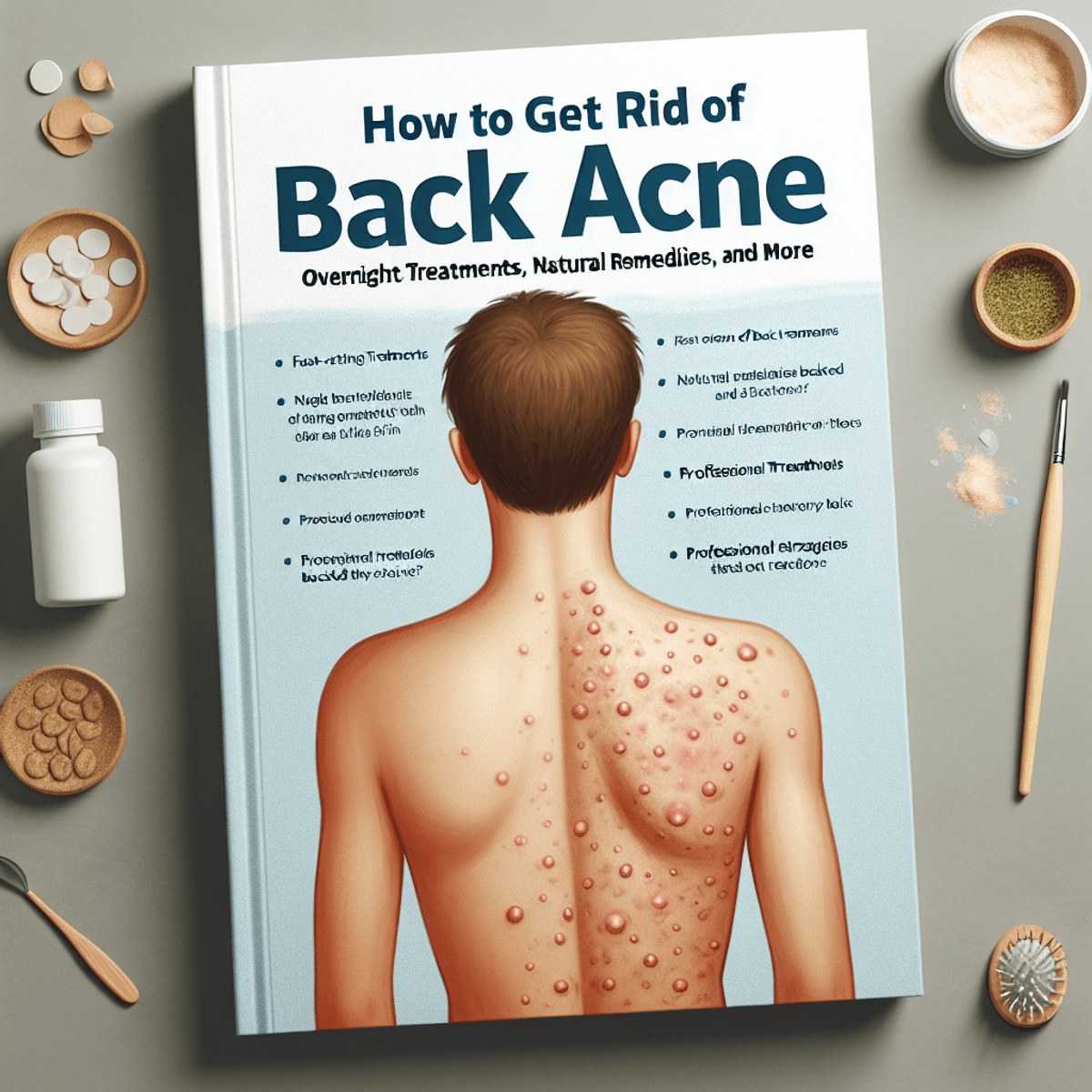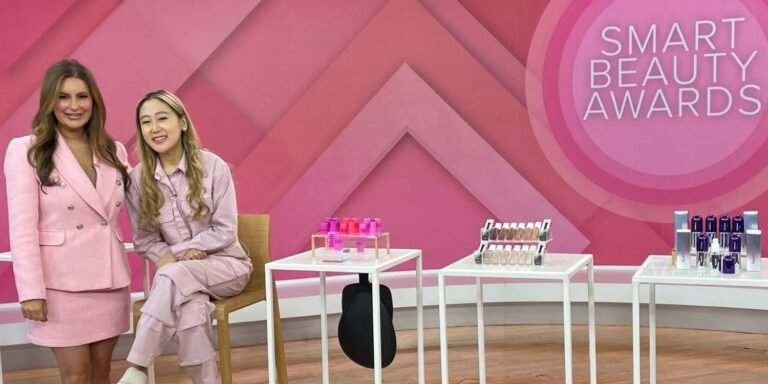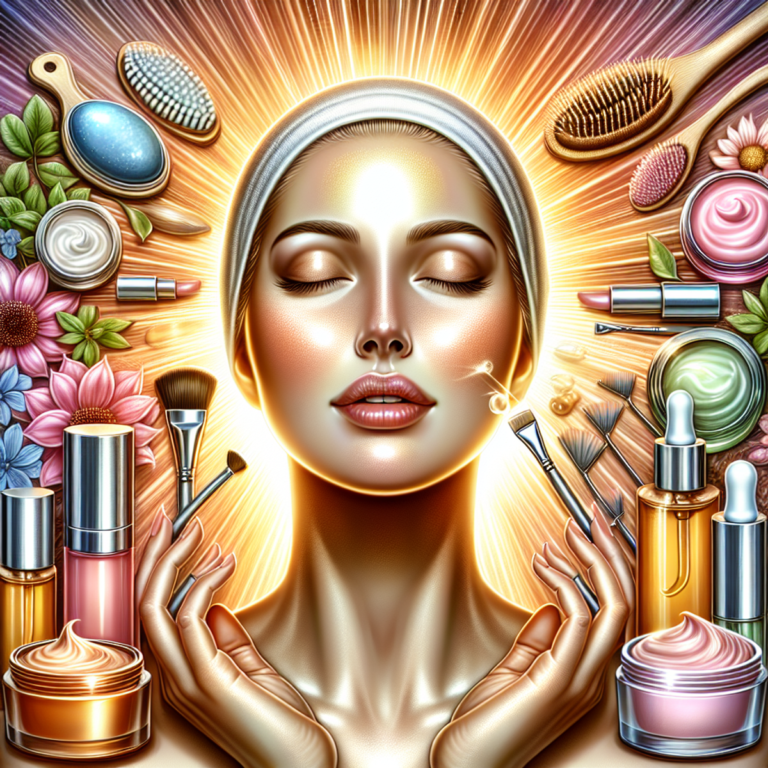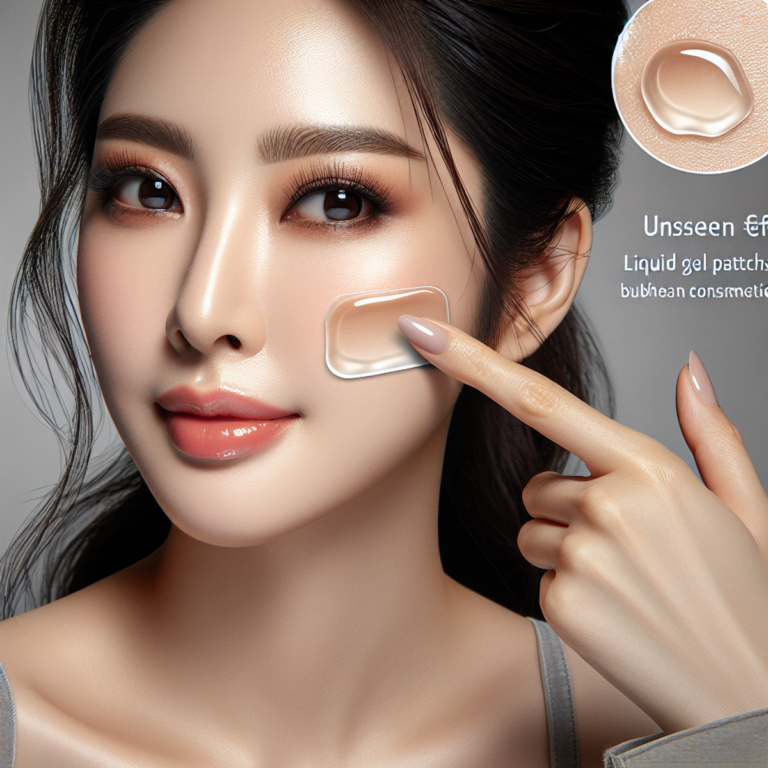How to Get Rid of Back Acne: Overnight Treatments, Natural Remedies, and More

How to Get Rid of Back Acne: Overnight Treatments, Natural Remedies, and More
Back acne, commonly known as “bacne,” affects millions of people worldwide, leaving both physical and emotional scars. This frustrating skin condition doesn’t discriminate – it can strike during teenage years, persist into adulthood, or even appear unexpectedly later in life.
Living with back acne presents unique challenges. The location makes it difficult to treat, and the embarrassment can impact your confidence, affecting everything from your clothing choices to intimate relationships. You might find yourself avoiding swimming pools, beach trips, or wearing certain outfits that expose your back.
The good news? You’re not alone in this struggle. Many people search for effective solutions to combat back acne, from quick overnight treatments to long-term natural remedies. Whether you’re dealing with occasional breakouts or persistent acne, understanding your treatment options is the first step toward clearer skin.
This comprehensive guide explores proven methods to tackle back acne, including:
- Fast-acting overnight treatments
- Natural remedies backed by science
- Prevention strategies that work
- Professional treatment options
Ready to take control of your skin health? Let’s dive into everything you need to know about treating and preventing back acne effectively.
Understanding Back Acne
Back acne develops through a combination of biological factors and external influences. Your skin’s sebaceous glands produce oil (sebum) that can mix with dead skin cells, creating a breeding ground for bacteria. This process leads to inflammation and the development of acne lesions on your back.
Key Factors Contributing to Back Acne:
1. Hormonal Changes
- Puberty triggers increased sebum production
- Menstrual cycles affect skin’s oil balance
- Pregnancy-related hormonal shifts
- PCOS and other endocrine conditions
2. Genetic Predisposition
- Family history of acne increases risk
- Inherited skin type affects susceptibility
- Genetic factors influence immune response
3. Medical Factors
- Certain medications trigger breakouts
- Steroid treatments
- Birth control pills
- Antidepressants
4. External Triggers
- Sweat accumulation during exercise
- Friction from tight clothing
- Heavy backpacks
- Non-breathable fabrics
The unique structure of your back creates specific challenges in acne formation. The skin on your back is thicker, has larger pores, and contains more sebaceous glands compared to facial skin. These characteristics make back acne particularly stubborn and resistant to treatment.
Physical Activities Impact:
- Exercise increases sweat production
- Sports equipment traps heat and moisture
- Delayed post-workout showering allows bacteria growth
- Synthetic workout clothes prevent skin breathing
Understanding these root causes helps you identify personal triggers and develop targeted treatment strategies. Your back acne might be caused by one main factor or a combination of several causes. By recognizing these patterns, you can implement specific preventive measures and choose suitable treatments for your unique situation.
The location and severity of your breakouts often indicate their underlying cause. Upper back acne is often related to hormonal changes, while lower back breakouts commonly result from friction and sweat. Scattered acne patterns might suggest genetic factors, requiring a comprehensive treatment approach.
Types of Back Acne
Back acne comes in different forms, and each type requires its own specific treatment. By knowing what kind of back acne you have, you can figure out the best way to treat it.
1. Blackheads
- Dark, open comedones on the skin surface
- Appear as small black dots due to oxidized melanin
- Common in oily areas of the back
- Often clustered around hair follicles
2. Whiteheads
- Closed comedones with white or flesh-colored appearance
- Remain sealed beneath the skin surface
- Smaller than other acne types
- Usually painless but persistent
3. Papules
- Small, red, raised bumps
- Tender to touch
- No visible pus
- Size typically under 5mm
- Indicate mild inflammation
4. Pustules
- Red, inflamed lesions with visible pus
- White or yellowish center
- Sensitive and painful
- Commonly appear in clusters
- Risk of scarring if squeezed
5. Cysts
- Large, painful bumps deep under skin
- Filled with pus and other fluids
- Size can exceed 5mm
- High risk of scarring
- May require professional treatment
Knowing the specific type of back acne you have helps you choose the right treatment. Sometimes, multiple types can show up at the same time, creating different patterns on your back. The severity and spread of these blemishes can vary from person to person, influenced by factors like skin type, hormonal balance, and lifestyle habits.
Keeping track of changes in your back acne patterns helps you see how well your treatment is working and identify possible triggers. Some areas might mainly show one type, while others display mixed varieties. This variation affects your treatment choices and how long you can expect it to take for recovery.
Overnight Treatments for Back Acne
Quick relief from back acne is possible with targeted overnight treatments designed to reduce inflammation and kill acne-causing bacteria. These treatments work while you sleep, taking advantage of your skin’s natural regeneration process.
Topical Treatments
Benzoyl Peroxide-Based Products
- Apply a 2.5% to 10% benzoyl peroxide wash or cream
- Kills P. acnes bacteria within hours
- Start with lower concentrations to minimize irritation
- Use white towels and pillowcases as it can bleach fabrics
Salicylic Acid Solutions
- Choose products with 1-2% concentration
- Unclogs pores by dissolving dead skin cells
- Reduces inflammation and redness
- Apply as a spot treatment or all-over solution
Spot Treatment Options
- Hydrocolloid patches
- Tea tree oil-based treatments
- Sulfur-containing products
- Niacinamide serums
Application Tips for Maximum Effectiveness
- Cleanse skin thoroughly before treatment
- Pat skin dry with a clean towel
- Apply treatment in thin, even layer
- Allow product to dry completely
- Wear loose, breathable clothing to bed
Recommended Products
- PanOxyl Acne Foaming Wash (4% benzoyl peroxide)
- Paula’s Choice 2% BHA Body Spot Exfoliant
- COSRX Acne Pimple Master Patch
- The Ordinary Niacinamide 10% + Zinc 1%
Treatment Combinations
- Pair benzoyl peroxide with moisturizer to prevent dryness
- Use salicylic acid in the morning, benzoyl peroxide at night
- Apply hydrocolloid patches after spot treatments
Safety Considerations
- Perform patch test before full application
- Avoid mixing multiple active ingredients
- Use sunscreen next day as treatments increase sensitivity
- Stop use if irritation occurs
- Keep treated areas clean and free from friction
These overnight treatments work best as part of a consistent skincare routine tailored to your specific needs and preferences.
Home Remedies for Overnight Relief
Quick relief from back acne is possible with several effective home remedies. These natural solutions can reduce inflammation and minimize the appearance of breakouts while you sleep.
1. Tea Tree Oil Spot Treatment
- Mix 3-4 drops of tea tree oil with 1 tablespoon of carrier oil
- Apply directly to affected areas using a cotton swab
- Leave on overnight
- Caution: Never apply undiluted tea tree oil directly to skin
2. Apple Cider Vinegar Solution
- Dilute equal parts ACV and water
- Apply with a cotton ball
- Rinse off after 10 minutes
- Best for mild to moderate acne
3. Honey and Turmeric Mask
- Mix 2 tablespoons raw honey with 1/2 teaspoon turmeric
- Apply a thin layer to affected areas
- Leave on for 20-30 minutes before bed
- Protect bedding with an old t-shirt
4. Aloe Vera Gel Treatment
- Apply pure aloe vera gel directly to breakouts
- Layer can be left on overnight
- Works best when refrigerated for added cooling effect
5. Baking Soda Paste
- Create a paste with water
- Apply for 5-10 minutes maximum
- Rinse thoroughly
- Use only once per week to prevent skin irritation
These remedies work through different mechanisms:
- Tea tree oil: Antimicrobial properties
- Apple cider vinegar: pH balancing
- Honey: Natural antibacterial effects
- Aloe vera: Anti-inflammatory benefits
- Baking soda: Gentle exfoliation
Safety Tips:
- Patch test new remedies on a small area first
- Stop use if irritation occurs
- Don’t mix multiple treatments in one night
- Avoid applying near eyes or broken skin
- Use clean pillowcases and sheets
For stubborn spots, try the ice cube method: wrap an ice cube in a thin cloth and hold against the affected area for 1-2 minutes to reduce inflammation and redness.
Natural Remedies for Long-Term Management
Natural remedies offer a gentle, sustainable approach to managing back acne. These solutions work with your body’s natural healing processes to reduce inflammation and prevent future breakouts.
Herbal Solutions
Tea Tree Oil Applications
- Mix 3-5 drops with a carrier oil like jojoba
- Apply directly to affected areas using a cotton ball
- Use twice daily for best results
Tea tree oil’s natural antimicrobial properties target acne-causing bacteria without harsh chemicals. Studies show it can reduce inflammation and redness associated with persistent bacne.
Green Tea Compresses
- Brew strong green tea and let it cool
- Soak a clean cloth in the tea
- Apply to affected areas for 10-15 minutes
- Repeat 2-3 times weekly
Green tea’s antioxidants help reduce sebum production and calm irritated skin.
Honey Treatments
Raw honey serves as a powerful natural antibacterial agent:
- Apply a thin layer of raw honey to clean skin
- Leave for 15-20 minutes
- Rinse with lukewarm water
- Repeat 3-4 times per week
Baking Soda Exfoliation
Create a gentle exfoliating paste:
- Mix 2 parts baking soda with 1 part water
- Apply in circular motions
- Limit use to once weekly to prevent irritation
Essential Oil Blends
Create a therapeutic blend using:
- Lavender oil for inflammation
- Rosemary oil for circulation
- Chamomile oil for soothing
Mix with a carrier oil before application.
Natural Treatment Considerations
While natural remedies offer numerous benefits, they require:
- Consistent application
- Patience for visible results
- Patch testing before full application
- Understanding of potential allergic reactions
Potential Limitations
Natural remedies have certain limitations, including:
- Results vary significantly between individuals
- May take longer to see improvement compared to conventional treatments
- Not suitable for severe cases of back acne that require medical intervention
- Possible skin sensitivities or allergic reactions to specific ingredients
Natural treatments work best when combined with proper hygiene and lifestyle habits. Regular cleansing, avoiding tight clothing, and maintaining a balanced diet enhance the effectiveness of these remedies.
Lifestyle Changes
Your daily habits play a crucial role in managing back acne effectively. Simple adjustments to your routine can create significant improvements in your skin’s health.
Hygiene Best Practices:
- Shower immediately after sweating
- Use lukewarm water instead of hot water
- Pat dry your skin gently with a clean towel
- Change your sheets weekly
- Clean your phone screen regularly
- Keep long hair tied up and away from your back
Clothing Choices That Help:
- Choose loose-fitting clothes made from natural fibers
- Opt for moisture-wicking fabrics during workouts
- Avoid synthetic materials that trap heat
- Select white or light-colored clothing to minimize dye irritation
- Wear clean clothes daily
- Remove wet clothing promptly
Exercise and Activity Considerations:
- Bring an extra shirt to change into after workouts
- Use a clean towel to wipe sweat during exercise
- Remove gym bags and backpacks when possible
- Adjust sports equipment straps to minimize friction
- Clean exercise equipment before use
Sleep Habits:
- Use silk or cotton pillowcases
- Sleep in loose-fitting, breathable pajamas
- Change sleepwear regularly
- Keep hair tied up while sleeping
- Position fans to reduce back sweating at night
Additional Tips:
- Avoid touching your back unnecessarily
- Use fragrance-free laundry detergent
- Skip fabric softeners on clothes touching your back
- Consider using antimicrobial towels
- Keep a spare shirt at work or school
These lifestyle modifications work best when implemented consistently. Small changes in your daily routine can lead to noticeable improvements in your back acne condition. Remember to maintain these practices even after your skin clears to prevent future breakouts.
Preventing Future Breakouts
Preventing back acne starts with understanding how important your diet is for healthy skin. Studies have shown that certain foods can directly cause acne breakouts, so making changes to your diet can be a powerful way to improve your skincare routine.
Diet Considerations
The foods you eat have a big impact on sebum production, which is the natural oil your skin produces. Foods with a high glycemic index can cause spikes in insulin levels, leading to increased sebum production and potential breakouts. Additionally, some foods are known to cause acne, so here’s how you can adjust your diet for clearer skin:
Foods to Reduce:
- Sugary snacks and beverages
- White bread and refined grains
- Processed foods
- Full-fat dairy products
- Fried foods
- Milk chocolate
Foods to Include:
- Leafy greens like spinach, kale, and collard greens
- Omega-3 rich foods such as salmon, chia seeds, and walnuts
- Zinc-rich foods like pumpkin seeds and chickpeas
- Antioxidant-rich berries
- Whole grains
- Dark chocolate with 70% or higher cocoa content
Hydration Requirements:
- Drink 8-10 glasses of water every day
- Consume 2-3 cups of green tea
- Include fresh vegetable juices in your diet
- Stay hydrated with coconut water
Following a low-glycemic diet can help regulate your blood sugar levels and reduce inflammation throughout your body, including your skin. Some studies suggest that dairy products may contain growth hormones that could trigger acne breakouts. Here are some practical substitutions you can make:
Dairy Alternatives:
- Use almond milk instead of regular milk
- Opt for coconut yogurt instead of dairy yogurt
- Replace cheese with nutritional yeast
- Choose plant-based protein powders over whey protein
Skin-Supporting Supplements:
- Vitamin D3
- Zinc
- Probiotics
- Omega-3 fatty acids
- Vitamin A
Track what you eat and how your skin reacts for 4-6 weeks to identify any specific trigger foods. While some people may notice improvements within two weeks of making dietary changes, others might need several months to see significant results. It’s important to maintain consistent portion sizes and meal timing to help regulate hormonal balance.
Consider working with a registered dietitian to create a personalized meal plan that addresses your specific skin concerns while also meeting your nutritional needs.
Skincare Routine
A consistent skincare routine is essential for managing back acne effectively. Your routine should include gentle cleansing, regular exfoliation, and proper moisturization.
Essential Steps for Your Back Skincare Routine:
Morning Cleanse:
- Use a non-comedogenic body wash containing salicylic acid
- Apply with a long-handled brush to reach difficult areas
- Rinse thoroughly with lukewarm water
Evening Deep Clean:
- Double cleanse if you’ve been sweating
- Use a benzoyl peroxide wash 2-3 times weekly
- Pat dry with a clean towel
Recommended Products for Sensitive Skin:
- Gentle Cleansers:CeraVe SA Body Wash
- Neutrogena Body Clear Body Wash
- La Roche-Posay Effaclar Medicated Gel Cleanser
- Non-Comedogenic Moisturizers:Cetaphil Moisturizing Lotion
- Vanicream Moisturizing Skin Cream
- The Ordinary Natural Moisturizing Factors
Exfoliation Schedule:
- Physical Exfoliation (1-2 times weekly):Use a gentle body scrub
- Apply with light pressure in circular motions
- Avoid harsh loofahs or brushes
- Chemical Exfoliation (2-3 times weekly):Use products with AHA/BHA
- Apply after cleansing
- Allow products to absorb for 2-3 minutes
Pro Tips for Maximum Results:**
- Change your sheets weekly
- Use fresh towels for each shower
- Apply products while skin is slightly damp
- Keep hair tied up during sleep
- Wear loose-fitting, breathable sleepwear
Your skincare products should match your skin’s sensitivity level. Start with gentler options and gradually introduce stronger treatments as your skin gets used to them. Pay attention to how your skin reacts and make changes to your routine as needed.
Treating Pimple Marks and Scars
Back acne scars can be a difficult part of your skin healing journey. These marks can vary from dark spots (post-inflammatory hyperpigmentation) to deep, textured scars. Knowing what type of scar you have can help you find the best treatment.
Common Types of Acne Scars:
- Ice Pick Scars: Deep, narrow indentations
- Rolling Scars: Wave-like depressions
- Boxcar Scars: Angular depressions with sharp edges
- Hyperpigmentation: Dark spots or patches
Over-the-Counter Products
Targeted treatments are designed to fade discoloration and improve skin texture. Here’s what to look for in products that treat scars:
Key Ingredients for Scar Treatment:
- Vitamin C: Brightens dark spots and stimulates collagen production
- Retinol: Accelerates cell turnover and improves skin texture
- Niacinamide: Reduces inflammation and evens skin tone
- Alpha Arbutin: Lightens hyperpigmentation
- Kojic Acid: Inhibits melanin production
Recommended Products for Back Acne Scars:
- Serums: Look for concentrated formulas with multiple active ingredients
- Spot Treatments: Target specific areas with higher concentrations
- Chemical Exfoliants: AHA/BHA products help fade surface-level scarring
- Scar Gels: Silicone-based products help flatten raised scars
Application Tips:
- Apply products on clean, dry skin
- Use sunscreen during the day to prevent darkening
- Start with lower concentrations to avoid irritation
- Be consistent with applications
- Allow 8-12 weeks for visible results
Treatment Combinations:
- Morning routine: Vitamin C + Sunscreen
- Evening routine: Retinol + Moisturizer
- Weekly treatment: Chemical Exfoliant Treatment
Remember to patch test new products on a small area first. Scar treatment requires patience – results typically become visible after several weeks of consistent use. Some scars might need professional intervention for optimal results.
Natural Scar Treatments
Nature offers powerful solutions for healing back acne scars and dark spots. These remedies work gradually but can deliver lasting results without harsh chemicals.
1. Aloe Vera
- Fresh aloe gel contains compounds that boost collagen production
- Rich in vitamins C and E that promote skin healing
Application: Apply pure aloe vera gel directly to scars twice daily. Leave on for 30 minutes before rinsing.
2. Vitamin E Oil
- Penetrates deep into scar tissue to promote healing
- Can help fade both new and old scars
Application: Mix with a carrier oil like jojoba for better absorption. Massage gently into affected areas before bed.
3. Lemon Juice
- Natural bleaching properties help lighten dark spots
Application: Mix equal parts lemon juice and honey. Apply to scars for 10 minutes. Use sunscreen after treatment as skin becomes photosensitive.
4. Raw Honey
- Contains natural antibacterial properties
- Creates optimal environment for scar healing
Application: Apply as a mask for 15-20 minutes. Use Manuka honey for enhanced benefits.
5. Rosehip Oil
- Rich in vitamin A and essential fatty acids
- Helps rebuild damaged skin cells
Application: Apply directly to scars twice daily. Can reduce both texture and discoloration.
6. Natural Exfoliants
- Sugar or coffee grounds mixed with coconut oil
- Gentle circular motions to remove dead skin
Application: Use 2-3 times weekly. Helps fade marks by promoting cell turnover.
7. Green Tea
- Antioxidants reduce inflammation
Application: Apply cooled green tea bags directly to scars. Hold for 5-10 minutes. Repeat twice daily for best results.
These natural treatments require consistent application for visible results. Take progress photos every two weeks to track improvements. Combine multiple remedies based on your skin’s response, but introduce new treatments gradually to avoid irritation.
When to Consult a Dermatologist
Back acne can be stubborn, and certain signs indicate it’s time to seek professional help. You should schedule an appointment with a dermatologist if you experience:
- Severe, painful cysts or nodules
- Persistent acne that doesn’t respond to over-the-counter treatments
- Deep scarring or dark spots
- Emotional distress affecting your daily life
- Acne covering large areas of your back
- Signs of infection (redness, warmth, or pus)
Professional Treatment Options
Dermatologists offer specialized treatments tailored to your specific condition:
Chemical Peels
- Professional-grade exfoliation
- Helps remove dead skin cells
- Reduces appearance of scars
- Improves skin texture
Light Therapy
- Blue light targets acne-causing bacteria
- Red light reduces inflammation
- Multiple sessions typically required
- Minimal side effects
Prescription Medications
Topical Prescriptions
- Tretinoin (stronger than over-the-counter retinoids)
- Clindamycin (antibiotic)
- Azelaic acid
- Dapsone gel
Oral Medications
- Antibiotics
- Doxycycline
- Minocycline
- Typically prescribed for 3-6 months
- Helps reduce inflammation and bacteria
- Isotretinoin
- Reserved for severe cases
- Requires regular blood tests
- Treatment duration: 4-6 months
- Highly effective but carries potential side effects
- Hormonal Treatments
- Birth control pills
- Spironolactone
- Particularly effective for women with hormonal acne
Side Effects and Considerations
Each prescription medication carries potential side effects:
- Isotretinoin: Dry skin, lips, potential mood changes
- Antibiotics: Digestive issues, sun sensitivity
- Hormonal treatments: Irregular periods, breast tenderness
Your dermatologist will:
- Evaluate your skin condition
- Review your medical history
- Discuss potential treatment options
FAQs (Frequently Asked Questions)
What is back acne and what causes it?
Back acne, commonly referred to as bacne, is a skin condition characterized by the presence of pimples on the back. It can develop due to various factors including hormonal fluctuations, genetics, medications, sweat, and friction. Understanding these causes is essential for effectively treating and preventing future breakouts.
What are the different types of back acne?
Back acne can manifest in several forms including blackheads, whiteheads, papules, pustules, and cysts. Each type has distinct characteristics; for instance, blackheads are open comedones that appear dark due to oxidized oil, while cysts are larger, painful lumps under the skin.
What overnight treatments can help get rid of back acne?
Overnight treatments for back acne often include topical solutions containing active ingredients like benzoyl peroxide and salicylic acid. These ingredients work by reducing inflammation and unclogging pores. Additionally, natural remedies such as tea tree oil or apple cider vinegar may provide quick relief.
Are there effective home remedies for treating back acne?
Yes, several home remedies can help manage back acne. Popular options include tea tree oil for its antibacterial properties and aloe vera for its soothing effects. It’s important to apply these remedies correctly and be aware of any potential skin sensitivities.
How can lifestyle changes contribute to managing back acne?
Lifestyle changes play a significant role in managing bacne. Maintaining a consistent skincare routine, wearing breathable fabrics to reduce sweat and friction, and consuming a balanced diet rich in antioxidants can all help minimize breakouts over time.
Can natural remedies provide long-term relief from back acne?
Natural remedies can be beneficial for long-term management of back acne when used in conjunction with proper skincare practices. Ingredients like honey have antibacterial properties while baking soda serves as an exfoliant. However, relying solely on natural treatments may not be sufficient for everyone.










